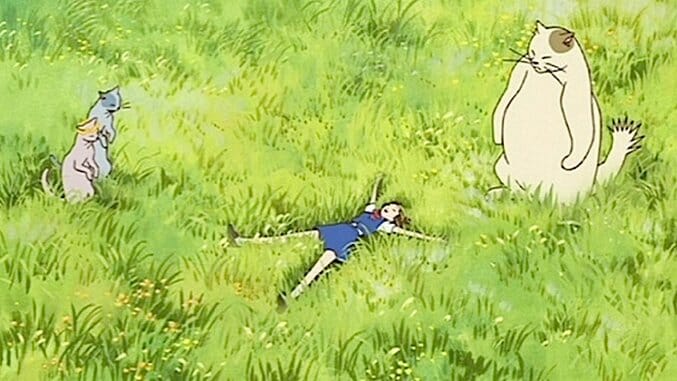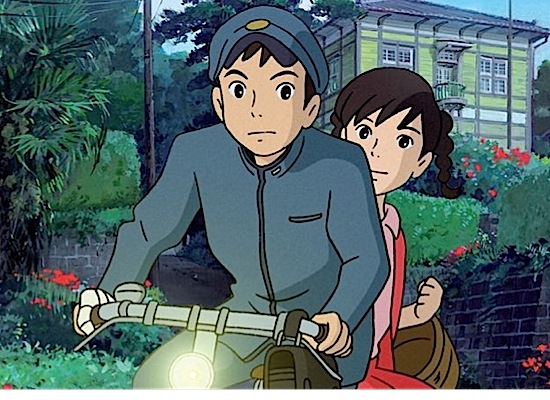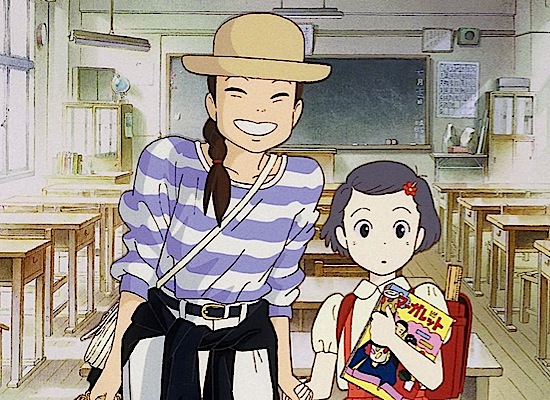Six Best Studio Ghibli Films Not Directed by Hayao Miyazaki

Few other animation studios invoke the praise and name recognition as Studio Ghibli. And perhaps few if any other name is more synonymous with Ghibli’s outstanding pedigree of critically lauded, genre-defining masterpieces than that of Hayao Miyazaki. One could say that Ghibli is the house that Miyazaki built, having directed a total of nine of studio’s twenty feature-length films (not including Nausicaä of the Valley of Wind).
However, Miyazaki notwithstanding, Ghibli has been home to a small yet prestigious roster of talented directors whose works have bolstered the studio’s hold on the imaginations of anime aficionados and general movie-goers alike, while cementing its legacy as one of the preeminent purveyors of anime as a global art form over the past 30 years. Here are six of the best Studio Ghibli films that don’t feature Hayao’s name on top billing!
6. From Up On Poppy Hill (2013)
Director: Goro Miyazaki

Goro Miyazaki is one of—if not the most—scrutinized of Ghibli’s nascent directors. The son of the master himself, Goro’s body of work has been been hounded by the lofty expectations heaped upon his family name long before even the release of his critically maligned debut, Tales from Earthsea, in 2006.
His follow-up in 2011, From Up on Poppy Hill, is a far stronger showing of his potential for greatness. Set in Yokohama, Japan, at a turning point in the country’s newfound post-war identity, Poppy Hill follows the story of Umi Matsuzaki, a young high school girl who befriends a strong-willed student journalist by the name of Shun Kazama and joins him in his campaign to save their school’s historic yet dilapidated clubhouse from being demolished. As the two rally together the student body to defy the school’s decision, circumstances come to light that threaten to upend their budding relationship. Umi and Shun remain nonetheless steadfast in their resolve to save the clubhouse, all the while searching their hearts in the wake of uncertain revelations.
Though the film is is certainly not without its occasional lulls, it benefits greatly from a storyboard screenplay co-penned by none other than Hayao Miyazaki and Keiko Niwa (The Secret World of Arrietty). Karey Kirkpatrick’s English-adapted screenplay is deserving of special mention, injecting incidental quips of background dialogue throughout the film that are as enlightening as they are hilarious. This may not be Goro’s first great film to step entirely from the shadow of his father’s influence, but the simple exuberant charm of From Up on Poppy Hill bodes well for future efforts.
5. The Tale of Princess Kaguya (2013)
Director: Isao Takahata

It’s entirely likely that you could be reading this as ardent fan of Studio Ghibli and Hayao Miyazaki’s films and have no idea who Isao Takahata is. As one of the three founding members of Studio Ghibli, Takahata has directed the second largest number of Ghibli features, eclipsed only by that of his former protege, long-time colleague and unofficial rival. His fifth Studio Ghibli feature and final film, The Tale of Princess Kaguya, was produced alongside and released in the same year as that of Miyazaki’s own parting production, The Wind Rises.
Adapted and inspired by a 10th-century Japanese fable, the film follows the story of the enchanted life and journey of a child who, born from the shoot of a bamboo tree, is discovered and adopted by an elderly bamboo cutter and raised as his own daughter. One of the most captivating dramas Ghibli has produced as of late, The Tale of Princess Kaguya is beautiful both in its story and it’s telling, imbued with an unmistakable aura of impressionistic beauty thanks to its soft watercolor hues and boldly calligraphic compositions.
The sight of Kaguya, surrendering to a fit of desperation, as she storms from the confines of her father’s estate, her ceremonial garments discarded in a regal flourish as she seemingly transforms into a living brushstroke surging like a blur across the canvas of the scene makes for one of the most heart-wrenchingly evocative and stunningly animated sequences in recent memory. The Tale of Princess Kaguya is a declarative testament to why Takahata stands alone and apart from that of his former protege and colleague’s reputation and why he deserves to be touted as a master of the craft of anime in his own right.
-

-

-

-

-

- Curated Home Page Articles By Test Admin October 21, 2025 | 3:10pm
-

- Curated Home Page Articles By Test Admin October 21, 2025 | 2:57pm
- Urls By Test Admin October 21, 2025 | 2:57pm
- Curated Home Page Articles By Test Admin October 21, 2025 | 2:55pm
-

-

-

-

-

-

-

-

-

-

-

-

-

-

-

-

-

-

-

-

-

-

-

-

-

-

-

-

-

-








































